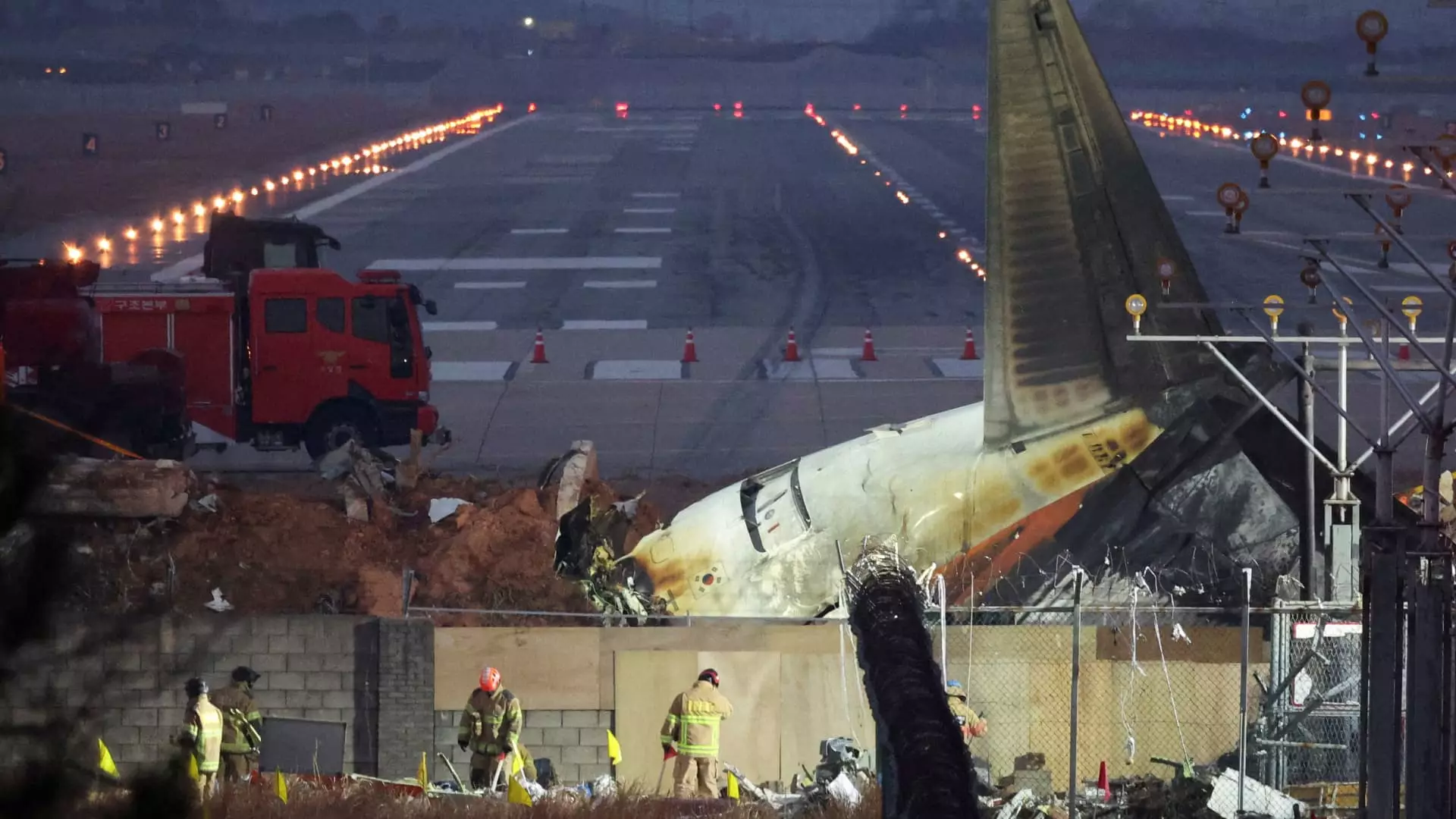The tragic crash of Jeju Air Flight 7C2216 on Sunday morning has sparked significant debate within the aviation community regarding the safety and design of airport facilities. The Boeing 737-800, after completing an overnight flight, encountered disaster upon landing when it struck a concrete wall and a mound of dirt located just beyond the runway’s end. This incident resulted in the loss of 179 lives, with only two survivors from the 181 individuals onboard. The circumstances surrounding the crash, including the plane’s retracted landing gear and flaps, have raised alarm bells about the adequacy of current safety protocols and runway design.
Critics argue that the airport design significantly contributed to the high fatality count. Aviation expert Todd Curtis emphasizes that the presence of a concrete wall so close to the runway created a dangerous environment where a plane that had not successfully landed could rapidly enter a situation that drastically hampered its stopping capability. Unlike other airports that have employed engineered material arresting systems (EMAS) to cushion the landing and absorb kinetic energy, the setup at Muan International Airport has drawn scrutiny. This incident thus raises crucial questions regarding existing standards in design and the enforcement of guidelines aimed at minimizing risks in sensitive areas surrounding runways.
A thorough investigation will ensue, potentially taking months to conclude. Officials will delve into various factors, including the aircraft’s maintenance history and pilot conduct. The speculation regarding a bird strike impacting the engines is particularly concerning, as it highlights vulnerabilities in the operational protocols that need to be better understood and addressed. As investigators sift through cockpit voice recordings and other vital data, they must also scrutinize the different components that played into this tragic loss of life, not limited to mechanical failures but extending to systemic design flaws.
Historically, barriers at runway ends have proven effective in mitigating crash aftermaths. The EMAS at New York’s LaGuardia Airport exemplifies this, having successfully arrested planes that otherwise would have overrun the runway. In stark contrast, the rigid construction present at the crash site did not exhibit similar qualities, as evidenced by video footage suggesting that the concrete wall was unforgiving for a descending aircraft. If managed correctly, these design elements can offer another layer of protection that may save lives during unforeseen emergencies.
As the aviation community reflects on the implications of this disaster, there is a collective awareness that improvements in airport design must be prioritized. It’s crucial to establish dividers that are not only robust but also yield under impact, reducing blunt force trauma among passengers. Furthermore, this incident should fuel advocacy for updating and re-evaluating existing runway safety protocols to ensure that tragedies of this magnitude are not repeated. Only through rigorous examination and innovation in airport engineering can future flights hope to avoid such devastating outcomes.

